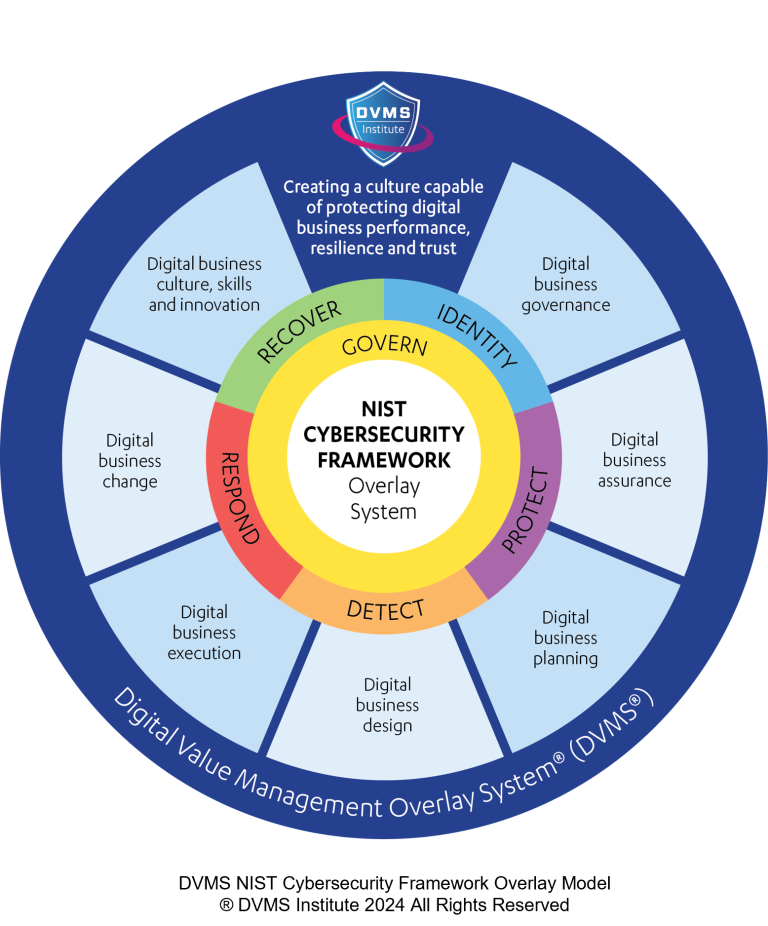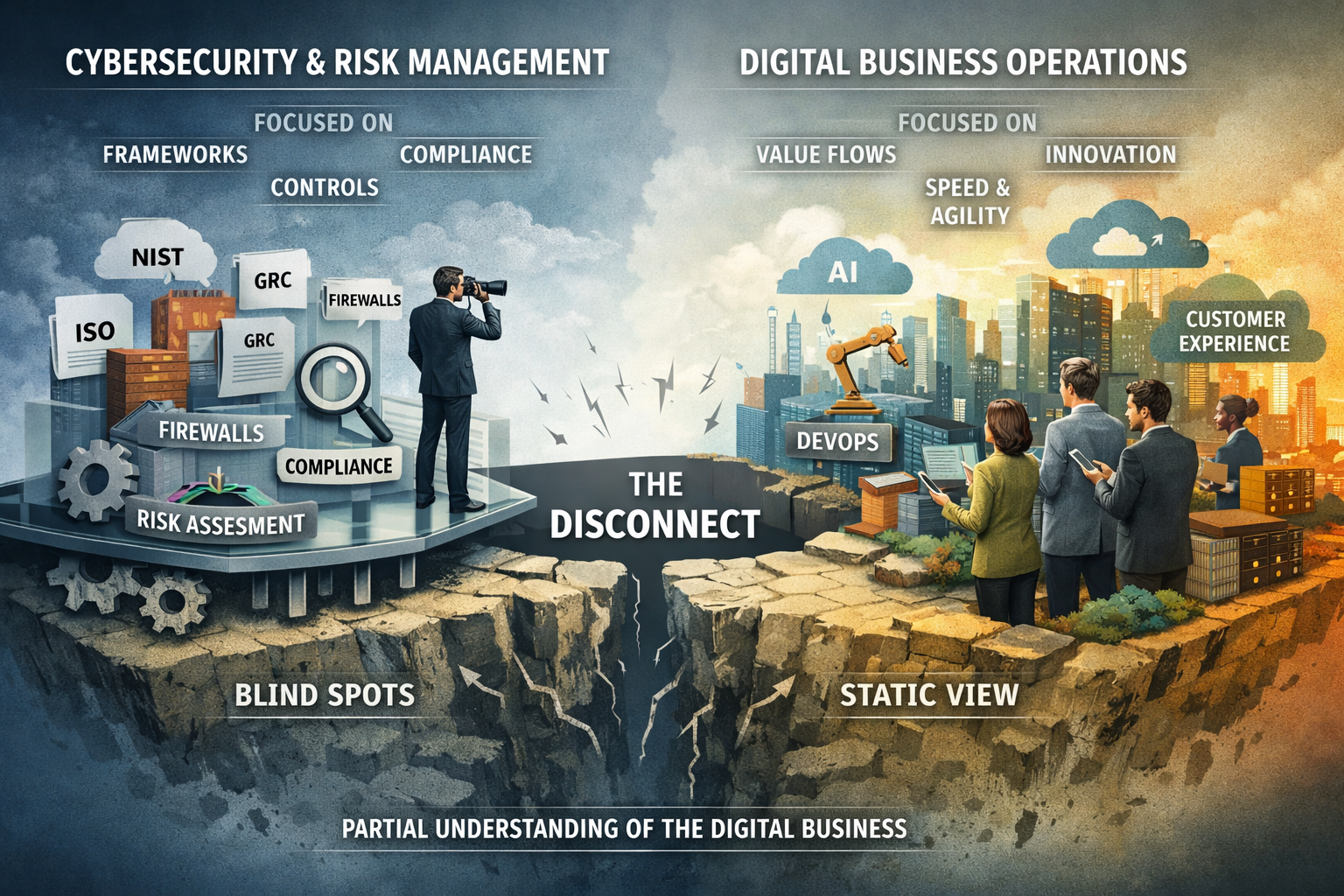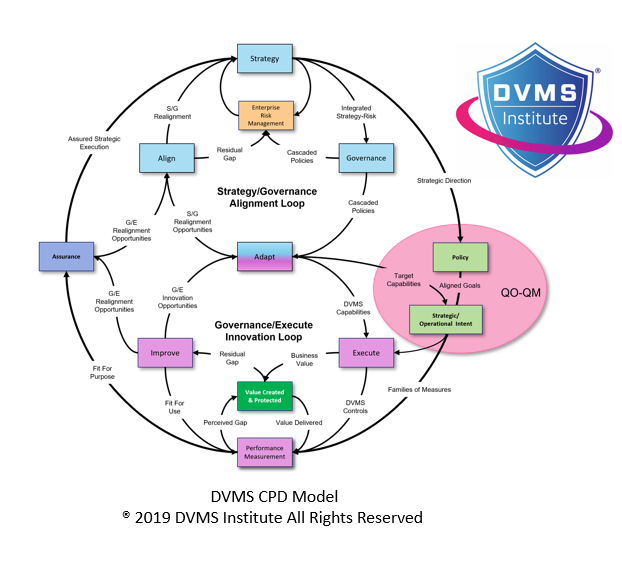The NIST Cybersecurity Framework – The New Standard for Cybersecurity Governance, Risk, Compliance (GRC) and Culture (GRCC)
Rick Lemieux – Co-Founder and Chief Product Officer of the DVMS Institute
The NIST Cybersecurity Framework (NIST-CSF) has rapidly emerged as a de facto standard for Cybersecurity Governance, Risk, and Compliance (GRC) in the modern digital landscape. Its comprehensive approach, flexibility, and emphasis on risk management have made it a valuable tool for organizations of all sizes and industries. This article explores the reasons behind the NIST-CSF’s growing prominence and the critical role of culture in its successful implementation.
The NIST-CSF: A Comprehensive Approach
The NIST-CSF offers a structured methodology for managing cybersecurity risks. It outlines a six-step process: Govern, Identify, Protect, Detect, Respond, and Recover. Each step provides core functions, categories, and practices organizations can adopt to enhance their cybersecurity posture. This comprehensive approach ensures that organizations address all critical aspects of cybersecurity risk management, including the risks associated with cybersecurity culture.
One of NIST-CSF’s key strengths is its flexibility. It is not prescriptive, allowing organizations to tailor the framework to their specific needs and circumstances, including those of their supply chains. This adaptability suits organizations of any size, scale, or complexity. The NIST-CSF is regularly updated to reflect evolving threats and best practices, ensuring its continued relevance.
The NIST-CSF: The Foundation for GRC + Culture
The NIST-CSF serves as an excellent foundation for GRCC initiatives. It provides a common language and framework for assessing and managing risks, facilitating conservations and collaboration between teams and departments, and creating a culture capable of mitigating the cyber risks that could impact digital business performance, resilience, and client trust. By aligning traditional GRCC efforts with the NISTCSF, organizations can ensure that their cybersecurity measures align with their overall business objectives.
Furthermore, the NIST-CSF can help organizations demonstrate their commitment to cybersecurity risk management to stakeholders, including customers, partners, and regulators. By adopting the NIST-CSF, organizations can enhance their reputation and reduce their exposure to legal and financial risks.
The NIST-CSF: Its Success Is Tied to Creating a Culture Capable of Protecting Organizational Digital Value, Resilience, and Client Trust
While the NIST-CSF provides a valuable framework for GRC, its success ultimately depends on the organizational culture. A robust cybersecurity risk management culture is essential for creating a shared sense of responsibility and fostering trust and collaboration. Organizations can more effectively identify and mitigate risks when employees are empowered to report vulnerabilities and participate in cybersecurity initiatives.
A culture of cybersecurity also involves continuous learning and improvement. Organizations must invest in constant training and education to ensure that employees have the knowledge and skills to identify and mitigate cyber risks that could impact their ability to deliver value to their clients.
Moreover, a strong cybersecurity culture requires leadership commitment. Senior executives must actively support cybersecurity risk management initiatives and demonstrate their commitment to protecting organizational assets and resiliency. By setting the tone from the top, leaders can create a culture where cybersecurity risk management is a priority.
The NIST Cybersecurity Framework has emerged as a leading standard for Governance, Risk, Compliance, and Culture (GRCC). Its comprehensive approach, flexibility, and focus on risk management make it a valuable tool for organizations of any size, scale, or complexity. However, the success of the NIST-CSF depends on the organizational culture. A robust cybersecurity culture is essential for creating a shared sense of responsibility, fostering collaboration, and driving continuous innovation and improvement. By embracing the NIST-CSF and cultivating a culture of cybersecurity risk management, organizations can enhance their ability to protect their digital business performance, resilience, and client trust.

Rick Lemieux
Co-Founder and Chief Product Officer of the DVMS Institute
The DVMS Institute teaches organizations of any size, scale, or complexity an affordable approach to mitigating cyber risk to protect digital business performance, resilience, and trust.
Rick has 40+ years of passion and experience creating solutions to give organizations a competitive edge in their service markets. In 2015, Rick was identified as one of the top five IT Entrepreneurs in the State of Rhode Island by the TECH 10 awards for developing innovative training and mentoring solutions for boards, senior executives, and operational stakeholders.
® DVMS Institute 2024 All Rights Reserved




